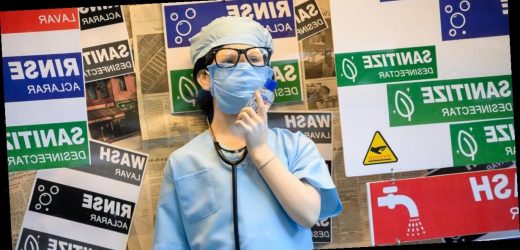- Routine disinfection is not necessary against COVID-19 in most situations, the CDC said on Monday.
- Studies have estimated the chance of catching COVID-19 from a surface at 1 in 10,000.
- Deep cleaning is a “bad use” of time and energy, one public health expert said.
- See more stories on Insider’s business page.
Routine use of disinfectants to fight COVID-19 is mostly not necessary, as the risk of transmission through touching surfaces is “low”, the CDC said on Monday.
In a science brief, based on analysis of the latest available data, the agency said that intense cleaning is only needed in a few scenarios.
This news could bring an end to what some refer to as “hygiene theater”, routine deep cleaning of things like hotel rooms, business premises, and public transport. This might appear reassuring, but is costly and, it seems, of limited use.
The risk of catching COVID-19 from surfaces is “generally considered to be very low”, as contact with a contaminated surface has less than 1 in 10,000 chances to lead to infection, according to some studies, the brief said.
In most settings, normal cleaning using soap or detergent is enough to reduce risk of transmission, the research brief said.
The CDC did identify one appropriate situation for deep-cleaning: an indoor environment where a case of COVID-19 had been confirmed within the last 24 hours.
It has been known for months that contamination is much more likely to happen through exposure to the virus in the air, via other people, rather than through surfaces.
Last May the CDC clarified its position by saying that “surface transmission isn’t thought to be the main way the virus spreads”, but still recommended “frequently touched surfaces” be disinfected.
The new position recommends less deep cleaning.
In an editorial published on February 2, leading academic journal Nature called for the CDC to update its guidance in this way.
It argued that resources and investment could be better used to emphasize the importance of wearing masks and to improve ventilation.
COVID-19 disinfection protocols have come at a high cost. Last year, the New York Metropolitan Transit Authority spent $484 million on sanitization and estimates that $380 million will go into COVID-19 related sanitization every year until 2023, Nature reported.
“If we took half the effort that’s being given to disinfection, and we put it on ventilation, that will be huge,” Jose-Luis Jimenez, an atmospheric chemist at the University of Colorado, told Nature.
The change in position from the CDC was welcomed by one public health expert. “Good to have the CDC leading the way again,” Prof. David Fisman of the University of Toronto Dalla Lana School of Public Health said in a tweet on Monday.
“Time to rethink the deep cleaning… it’s a bad use of time, energy, and resources,” he said.
Get the latest coronavirus business & economic impact analysis from Business Insider Intelligence on how COVID-19 is affecting industries.
Source: Read Full Article


